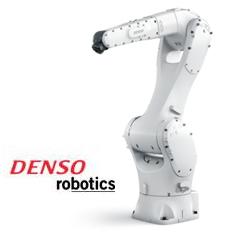Festo's BionicOpter
West Virginia University's Entry to 2013 RASC-AL Competition
Worcester Polytechnic Institute's Entry to 2013 RASC-AL Competition
New Robot Lends Precision And Reliability To The Production Of Hearing Aids
Extending USB 3.0 Over Fiber For Machine Vision Applications
Aerospace Automation
A New Class of Rogowski Coil Split-core Current Transducers
FAMU/FSU College of Engineering's Entry to 2013 RASC-AL Competition
The RoboUtes' Entry to 2013 RASC-AL Competition
University of Nebraska-Lincoln's Entry to 2013 RASC-AL Competition
Salamandra Robotica 2
Bebionic3 Myoelectric Hand In Action
Low Cost Hobbyists FPGA Kickstarter
Case Study: Robot for tool production company with 10 employees
Robotics In Law Enforcement
Records 1666 to 1680 of 1960
First | Previous | Next | Last
Industrial Robotics - Featured Product

